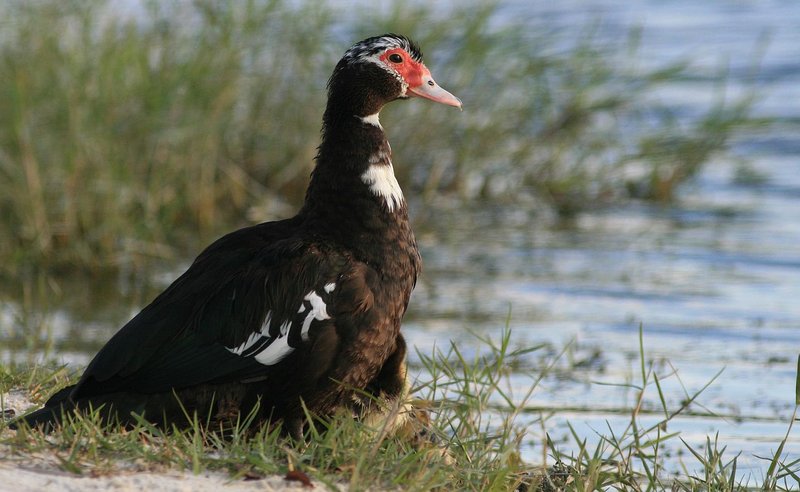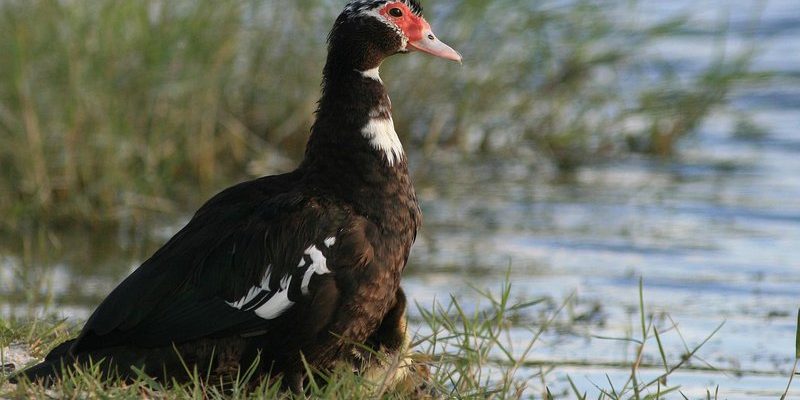
Understanding the Habitats of Muscovy Ducks
The Muscovy duck thrives in a range of environments, and this adaptability is one of its best traits. You might find them in various settings, from wetlands and ponds to urban parks. They are quite versatile, enjoying both rural settings and bustling city landscapes.
In terms of preferred habitats, Muscovy ducks are often spotted near freshwater bodies, including rivers, lakes, and marshes. These environments provide ample food sources, like aquatic plants and small aquatic animals, which are essential for their diet. Muscovy ducks are also known to forage in gardens or farms, making them a common sight in agricultural areas. Honestly, if you’re looking for them, these spots offer a great starting point.
Another key aspect to their habitat is the availability of safe nesting sites. Muscovy ducks might choose to nest in tree cavities or on the ground in dense vegetation. This preference ensures they have some protection from predators while raising their young. So, when searching for them, keep an eye out for places with plenty of cover.
North America: The Primary Range
In North America, Muscovy ducks are primarily found in Mexico, the southern United States, and parts of Central America. Their presence in these regions can vary based on the season, as some populations migrate for warmer weather. You might be wondering why they prefer these areas; well, it’s all about the climate and food availability.
In the U.S., they are often spotted in states like Texas, Florida, and California where vast wetlands and lakes provide excellent habitats. Parks and urban lakes in Florida, for instance, are hot spots for Muscovy ducks. Picture yourself walking around a sunny park, and then, surprise! You spot a group of Muscovy ducks lounging by the water’s edge, their bright feathers glistening in the sun.
They also often mingle with other duck species, which can make spotting them even more interesting. Just think of it as a little gathering of colorful characters, all vying for attention in the beauty of nature.
South America: Expanding Their Range
The Muscovy duck’s range extends into South America, where they’re commonly found in countries like Colombia, Venezuela, and Brazil. The lush environments of these regions—think rich rainforests and expansive wetlands—offer perfect conditions for them.
In South America, these ducks often flourish in areas close to rivers and lakes. In cities like Bogotá, you might even see them hanging out in urban parks or along canal systems. It’s interesting how they adapt to both wild and urban living conditions, showing their resourcefulness.
You may not find Muscovy ducks in every corner of South America, though. Their populations can be concentrated in specific areas where freshwater sources are abundant. So, if you’re planning a trip, it’s a good idea to research locations known for their Muscovy duck sightings beforehand.
The Caribbean: A Tropical Delight
Traveling a bit further, you’ll find Muscovy ducks in the Caribbean islands. Places like Cuba and Puerto Rico have populations of these charming birds. The tropical climates in these areas provide ideal habitats, similar to those in Central and South America.
In Cuba, they often populate freshwater lakes and rivers, making them a delightful sight for locals and tourists alike. Imagine walking along a scenic waterfront and spotting a group of Muscovy ducks splashing around. It’s these moments that really connect you to nature and its wonders.
Additionally, the varied ecosystems in the Caribbean, including swamps and wetlands, allow for diverse wildlife interactions. This means not only will you spot Muscovy ducks, but you might also encounter other unique bird species enjoying the same rich habitats.
Unique Behaviors of Muscovy Ducks
Part of what makes Muscovy ducks so fascinating to observe is their unique behaviors. Unlike many other ducks, they can actually be quite friendly and curious about humans. You might notice them approaching people in parks, especially if there’s food involved.
Interestingly, Muscovy ducks also have a different vocalization pattern. Instead of the typical quack, they make a series of hisses and grunts. This distinctive sound can make recognizing them easier when you’re out birdwatching. Just think of it as their way of communicating in their own quirky style!
You might also find them engaging in some unusual social behaviors. For instance, they have been observed forming strong bonds with each other, often seen preening one another or sticking close together in groups. Observing their interactions can give you fascinating insights into their social structures.
Challenges to the Muscovy Duck Population
While Muscovy ducks are adaptable, they do face challenges in their habitats. One of the biggest threats comes from habitat loss due to urban development. As cities expand, their natural wetlands and foraging grounds can be destroyed. This is a common issue for many wildlife species, but it’s important to recognize how it impacts Muscovy ducks, too.
Another concern is hunting and poaching. In some regions, they are hunted for their meat, which can significantly impact local populations. It’s essential for conservation efforts to raise awareness about sustainable practices and the importance of these beautiful birds in ecosystems.
Lastly, pollution and climate change can also affect their habitats. Contaminated water sources can reduce food availability and negatively impact their health. As we work to protect our natural world, it’s crucial to include the Muscovy duck in our conservation conversations.
How to Spot Muscovy Ducks in the Wild
If you’re keen on spotting Muscovy ducks, here are some tips to improve your chances. First, go to areas known for having natural water bodies. Look for lakes, ponds, marshes, or riverbanks—these are prime spots where Muscovy ducks are likely to hang out.
Next, try visiting during early morning or late afternoon. These times are often when ducks are most active and feeding. Bring binoculars for a closer look without disturbing them, and be patient. Observe from a distance to enjoy their natural behaviors without crowding them.
Also, consider learning their calls. As mentioned, Muscovy ducks don’t quack like their cousins. Being able to recognize their sounds will help you identify them in mixed flocks. Plus, it adds an engaging aspect to your birdwatching experience.
In conclusion, spotting Muscovy ducks can be an exciting adventure, whether you’re in North America, South America, or the Caribbean. These unique ducks have a charm all their own, and knowing what to look for can make your search rewarding. As you explore their habitats, you’ll not only deepen your appreciation for these quirky birds but also for the delicate ecosystems they inhabit. So grab your binoculars and get ready for an unforgettable wildlife experience!

